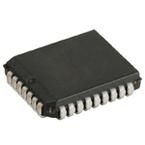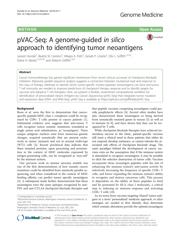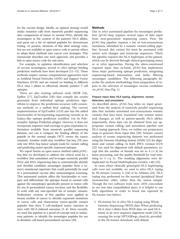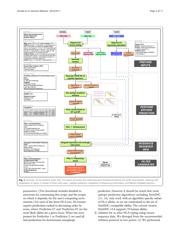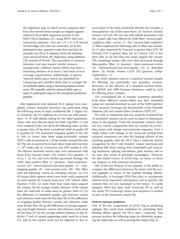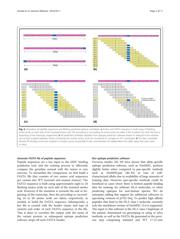下载

M ETHOD Open Access
pVAC-Seq: A genome-guided in silico
approach to identifying tumor neoantigens
Jasreet Hundal
1
, Beatriz M. Carreno
2
, Allegra A. Petti
1
, Gerald P. Linette
2
, Obi L. Griffith
1,2,4,5
,
Elaine R. Mardis
1,3,4,5,6*
and Malachi Griffith
1,4,5
Abstract
Cancer immunotherapy has gained significant momentum from recent clinical successes of checkpoint blockade
inhibition. Massively parallel sequence analysis suggests a connection between mutational load and response to
this class of therapy. Methods to identify which tumor-specific mutant peptides (neoantigens) can elicit anti-tumor
T cell immunity are needed to improve predictions of checkpoint therapy response and to identify targets for
vaccines and adoptive T cell therapies. Here, we present a flexible, streamlined computational workflow for
identification of personalized Variant Antigens by Cancer Sequencing (pVAC-Seq) that integrates tumor mutation
and expression data (DNA- and RNA-Seq). pVAC-Seq is available at https:// github.com/griffithlab/pVAC-Seq.
Background
Boon et al. were the first to demonstrate that cancer-
specific peptide/MHC class 1 complexes could be recog-
nized by CD8+ T cells present in cancer patients [1].
Substantial evidence now suggests that anti-tumor T
cells recognize tumor somatic mutations, translated as
single amino acid substitutions, as ‘neoantigens’. These
unique antigenic markers arise from numerous genetic
changes, acquired somatically that are present exclu-
sively in tumor (mutant) and not in normal (wild-type
(WT)) cells [2]. Recent preclinical data indicate that
these mutated proteins, upon processing and presenta-
tion in the context of MHC molecules expressed by
antigen-presenting cells, can be recognized as ‘non-self’
by the immune system.
Our previous work in murine sarcoma models was
one of the first demonstrations of how somatic cancer
mutations could be identified from massively parallel se-
quencing, and when considered in the context of MHC
binding affinity, can predict tumor specific neoantigens
[3]. A subsequent study further demonstrated that these
neoantigens were the same epitopes recognized by anti-
PD1 and anti-CTLA4 checkpoint blockade therapies and
that peptide vaccines comprising neo antigens could pro-
vide prophylactic effects [4]. Several other studies have
also characterized these neoantige ns as being derived
from somatically mutated genes in mouse [5] as well as
in humans [6–9], and have shown that they can be rec-
ognized by T cells.
While checkpoint blockade therapies have achieved tre-
mendous success in the clinic, patient-specific vaccines
still meet a clinical need in those patients that either do
not respond, develop resistance, or cannot tolerate the as-
sociated side effects of checkpoint blockade drugs. The
main paradigm behind the development of cancer vac-
cines rests on the assumption that if the immune system
is stimulated to recognize neoantigens, it may be possible
to elicit the selective destruction of tumor cells. Vaccines
incorporate these neoantigen peptides with the aim of
enhancing the immune system’s anti-tumor a ctivity by
selectively increasing the frequency of specific CD8+ T
cells,andhenceexpandingtheimmunesystem’sability
to recognize and destroy c ancerous cells. This process
is dependent on the ability of these peptides to bind
and be presented by HLA class I molecules , a critical
step to inducing an immune response and activating
CD8+ T cells [10].
As we move from vaccines targeting ‘shared’ tumor anti-
gens to a more ‘personalized’ medicine approach, in silico
strategies are needed to first identify, then determine
which somatic alterations provide the optimal neoantigens
* Correspondence: emardis@wustl.edu
1
McDonnell Genome Institute, Washington University School of Medicine, St.
Louis, MO, USA
3
Department of Medicine, Division of Genomics and Bioinformatics,
Washington University School of Medicine, St. Louis, MO, USA
Full list of author information is available at the end of the article
© 2016 Hundal et al. Open Access This article is distributed under the terms of the Creative Commons Attribution 4.0
International License (http://creativecommons.org/licenses/by/4.0/), which permits unrestricted use, distribution, and
reproduction in any medium, provided you give appropriate credit to the original author(s) and the source, provide a link to
the Creative Commons license, and indicate if changes were made. The Creative Commons Public Domain Dedication waiver
(http://creativecommons.org/publicdomain/zero/1.0/) applies to the data made available in this article, unless otherwise stated.
Hundal et al. Genome Medicine (2016) 8:11
DOI 10.1186/s13073-016-0264-5

